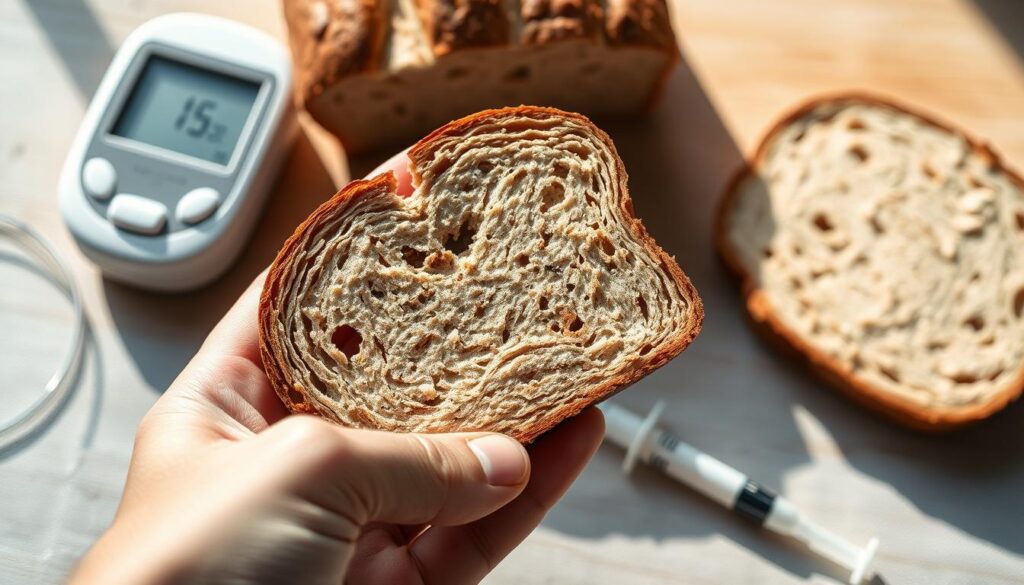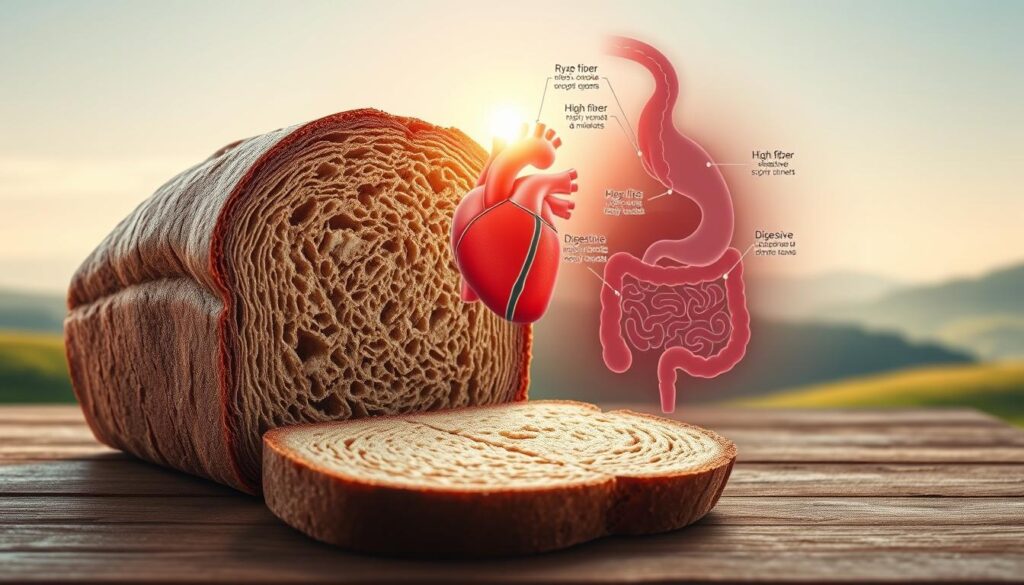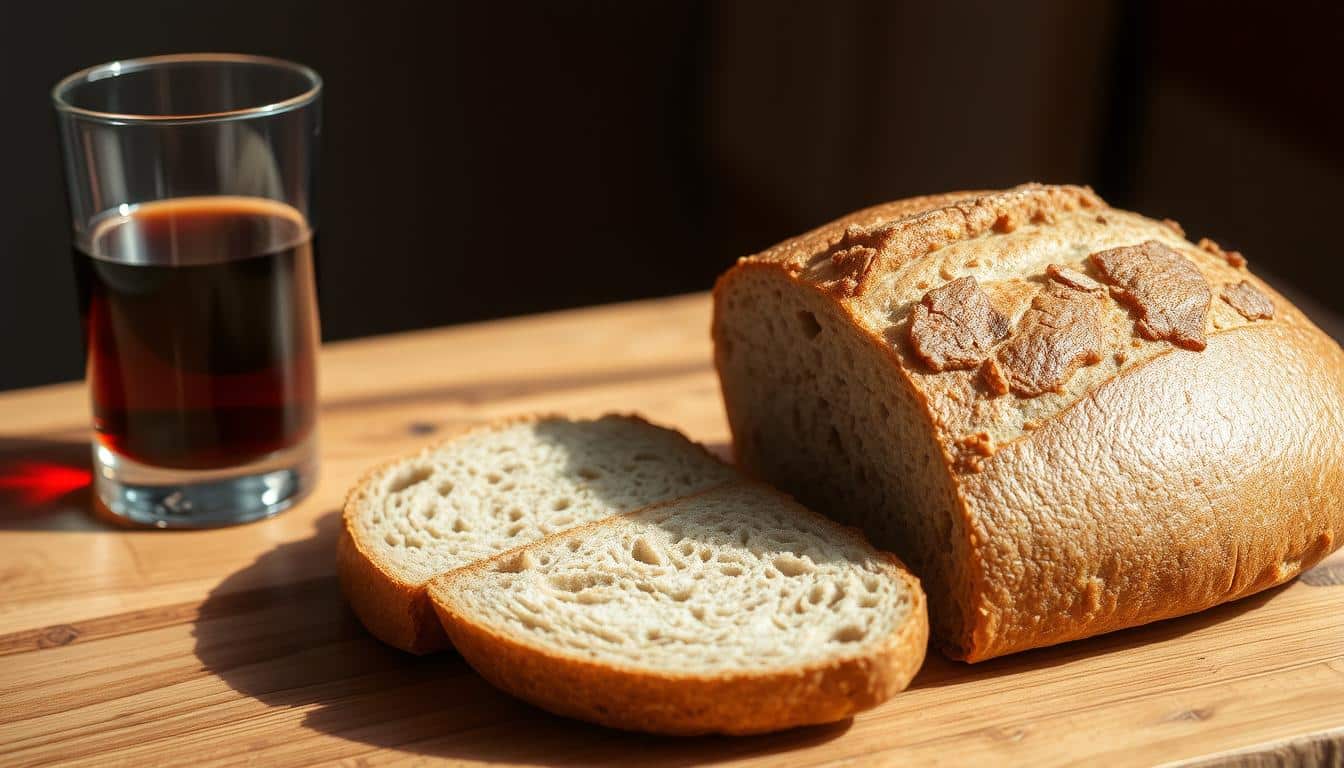Managing carbohydrate intake is critical for maintaining stable glucose levels. Many individuals with metabolic concerns wonder how specific foods, like certain grains, affect their wellness goals. This article examines whether one popular option aligns with dietary needs tied to blood sugar regulation.
Research suggests that whole-grain alternatives may offer advantages over refined counterparts. Compared to traditional white or wheat varieties, denser options often contain higher fiber content and essential nutrients like B vitamins. These properties can influence how the body processes carbohydrates.
A 2021 study published in the Journal of Nutrition found that participants consuming whole-grain products experienced slower glucose absorption. The presence of phenolic compounds in some grains may also support appetite regulation and digestive health. Such findings highlight potential benefits beyond basic nutrition.
This analysis explores peer-reviewed evidence on metabolic impacts, heart health connections, and practical dietary considerations. You’ll discover how specific choices compare in grams of fiber per slice and their effects on post-meal sugar spikes. Let’s evaluate the science behind these claims.
Nutritional Profile and Unique Qualities of Rye Bread
Understanding what’s in your food helps make smarter dietary choices. A single slice of traditional rye loaf (32g) delivers 83 calories with 15.5g carbohydrates and 1.9g fiber. This combination supports balanced energy release while providing essential B vitamins and selenium for metabolic functions.
Key Nutrients and Fiber Content
Dark rye varieties pack more nutrients due to whole-grain processing. Thiamine aids nerve health, while manganese supports bone development. The 2.7g protein per serving helps maintain muscle tissue, and selenium acts as a powerful antioxidant.
Fiber plays a starring role here. With nearly 2g per slice, this grain option slows carbohydrate breakdown. This process prevents sudden spikes in glucose levels, making it particularly useful for those managing metabolic conditions.
Comparison With Other Options
White bread contains 0.6g fiber and lacks many micronutrients found in rye. Even whole wheat versions typically offer 1.4g fiber per slice – 25% less than their denser counterpart. The extended fermentation process used in rye preparation enhances nutrient availability and creates its distinctive tangy flavor.
When selecting products, check labels for whole-grain flour as the first ingredient. This ensures you’re getting maximum benefits from vitamins, minerals, and dietary fiber that support long-term wellness goals.
Is Rye Bread Good for Diabetics: Benefits for Blood Sugar Management
Choosing nutrient-dense foods plays a vital role in maintaining balanced energy throughout the day. Research highlights two key components in certain grain products that aid metabolic regulation: soluble fiber and bioactive plant compounds.

Slower Carbohydrate Absorption
Soluble fiber forms a gel-like substance in your digestive tract. This slows the breakdown of carbs into glucose, preventing sudden spikes after meals. A 2022 study in Nutrition & Diabetes found participants who ate whole-grain options had 23% lower post-meal glucose than those consuming refined flour products.
Traditional preparation methods enhance this effect. Fermented varieties show even slower carbohydrate release due to enzymatic changes during processing. This makes them particularly useful for maintaining steady energy levels.
Phenolic Compounds and Satiety Hormones
Ferulic acid – a phenolic compound in whole grains – helps modulate insulin sensitivity. Clinical trials note improved cellular response to insulin when these compounds are present. This supports your body’s natural ability to manage glucose effectively.
Another benefit comes from appetite regulation. Studies show elevated GLP-1 and PYY hormone levels lasting up to 8 hours after consuming fiber-rich meals. These hormones signal fullness, reducing cravings and unnecessary snacking between meals.
For those managing metabolic conditions, these dual mechanisms create a powerful tool. Stabilized energy patterns and reduced hunger paves the way for sustainable dietary habits. Always consult your healthcare provider when making significant diet changes.
Heart and Digestive Health Benefits from Rye Bread
Your dietary choices influence more than just energy levels—they play a crucial role in long-term wellness. Certain grain products offer advantages that extend beyond basic nutrition, supporting multiple body systems simultaneously.

Improving Cholesterol Levels Naturally
Soluble fiber binds to bile acids in your intestines, forcing your body to use cholesterol reserves to replenish them. A 2023 study in the Journal of the American Heart Association found this process reduces LDL cholesterol by up to 14% when consuming 15g daily of soluble fiber-rich foods.
Traditional varieties made with whole-grain flour outperform refined options. White bread lacks this cholesterol-lowering effect due to minimal fiber content. Regular consumption of nutrient-dense alternatives supports arterial health and reduces cardiovascular risks.
Enhancing Digestive Regularity
The insoluble fiber in grain products adds bulk to stool, promoting consistent bowel movements. Fermentation by gut bacteria produces short-chain fatty acids that strengthen intestinal lining and reduce inflammation.
Compared to wheat-based options, whole-grain selections provide 40% more fiber per serving. This dual action—softening stool while feeding beneficial microbes—makes them superior for maintaining digestive comfort. Their magnesium and potassium content further supports heart muscle function, creating overlapping health benefits.
Comparing Rye Bread with Other Bread Types
Selecting the right loaf can significantly influence how your body processes carbohydrates. Different varieties vary in nutrient density and metabolic effects, making informed choices essential for maintaining balanced sugar levels.
Whole Grain Versus Refined Options
Whole-grain varieties retain their bran and germ, delivering up to 3x more fiber per slice than refined counterparts. Traditional options made with 100% whole-grain flour provide 2-3g of soluble fiber per serving, while white versions average 0.6g. This difference directly impacts how quickly carbs convert to glucose during digestion.
Refined flours in standard white loaves strip away beneficial nutrients. A 2022 clinical trial demonstrated that participants consuming refined-grain products experienced 31% faster glucose spikes compared to those choosing whole-grain alternatives. The milling process removes essential minerals like magnesium and zinc that support metabolic functions.
Glycemic Impact: Rye, Pumpernickel, and White Bread
Dense, fermented options like traditional varieties and pumpernickel boast glycemic indexes (GI) around 50-55. White options typically score 70-75 GI. This 40% difference means slower carbohydrate absorption, helping maintain steady energy after meals.
Per serving comparisons reveal clear advantages:
- Rye: 15g carbs, 2g fiber
- Pumpernickel: 14g carbs, 2.5g fiber
- White: 17g carbs, 0.6g fiber
These variations explain why whole grain selections better support long-term blood sugar management. Their higher fiber content and complex starch structures require more time to break down, preventing sudden glucose surges that strain insulin production.
Cooking and Incorporating Rye Bread into Your Diet
Creating balanced meals starts with smart ingredient choices. Homemade options let you control nutrients while avoiding additives common in store-bought products. This approach supports steady energy release and helps manage blood sugar levels effectively.
Homemade Rye Bread Recipe Overview
Combine 1 cup rye flour and 1 cup wholemeal flour in a mixing bowl. Add 1 tsp salt, 1 packet active dry yeast, and 1.5 cups warm water. Optional caraway seeds boost flavor without adding sugar. Knead for 8 minutes until elastic.
Let the dough rise in an oiled bowl for 90 minutes. Shape into a loaf and bake at 425°F for 30-35 minutes. Cool completely before slicing. Each piece provides 2g fiber and essential minerals like magnesium.
Easy Serving Ideas for a Balanced Meal
Pair a slice with scrambled eggs and spinach for breakfast. The protein-fat-fiber combo slows carb absorption. At lunch, try open-faced sandwiches topped with smoked salmon and cucumber.
For snacks, spread almond butter on toasted rye. Add sliced apples for extra crunch. These combinations help maintain stable blood sugar while delivering sustained energy. Portion control remains key—stick to 1-2 slices per meal alongside non-starchy vegetables.
Additional Considerations and Potential Downsides
While nutrient-rich options can support metabolic health, they may present challenges for some individuals. Let’s explore key factors to consider before making this food a regular part of your meal plan.
Gluten Sensitivity and Antinutrient Concerns
Certain grain products contain proteins that trigger immune responses in sensitive individuals. Traditional varieties made with whole-grain flour contain gluten, making them unsuitable for those with celiac disease or non-celiac gluten sensitivity. Approximately 1% of the population must avoid these proteins entirely to prevent intestinal damage.
Some whole-grain selections contain phytic acid, which can bind to minerals like iron and zinc during digestion. While this compound may reduce nutrient absorption in isolation, its effects are minimized when consumed as part of varied meals. Soaking or sprouting grains during preparation can further decrease antinutrient levels.
The high fiber content that benefits many may cause temporary digestive discomfort. Rapidly increasing intake can lead to bloating or gas as gut bacteria adjust. Gradually incorporating fiber-rich foods helps your microbiome adapt without significant discomfort.
Not all commercially produced options are created equal. Some manufacturers add sweeteners to balance the naturally earthy flavor. Always check nutrition labels—products listing sugar, molasses, or corn syrup among the first ingredients could counteract blood sugar management efforts.
Those managing specific conditions like type 2 diabetes or cardiovascular disease should consult a registered dietitian. Personalized guidance ensures dietary changes align with individual health requirements and medication regimens.
Conclusion
Making informed food decisions becomes essential when managing metabolic conditions. Whole-grain options like those made with dense flours offer fiber-rich advantages, supporting balanced glucose absorption and heart health. Studies highlight improved cholesterol profiles and digestive regularity linked to regular consumption of these nutrient-dense choices.
While these products show promise for blood sugar management, individual needs vary. Those with gluten sensitivities should explore alternatives, as traditional recipes contain wheat-based proteins. Always verify ingredient lists to avoid added sweeteners that could counteract benefits.
Portion control remains critical—pairing one to two slices with lean proteins and vegetables creates balanced meals. Consult your healthcare team to align dietary changes with personal health goals and medication plans.
Evidence-based choices, combined with professional guidance, empower sustainable strategies for maintaining healthy sugar levels. Prioritize whole grains and mindful eating habits to support long-term wellness.
FAQ
How does rye bread affect blood sugar compared to white bread?
Rye bread has a lower glycemic index than white bread due to its higher fiber content and slower carbohydrate absorption. This helps prevent rapid spikes in glucose levels, making it a better choice for managing type 2 diabetes.
What vitamins and minerals are found in rye bread?
Rye bread contains magnesium, iron, B vitamins, and zinc. These nutrients support energy production, immune function, and overall metabolic health. Brands like Dave’s Killer Bread and Mestemacher emphasize whole-grain rye in their recipes.
Can rye bread improve heart health for those with diabetes?
Yes. The soluble fiber in rye helps reduce LDL cholesterol by binding to bile acids. Studies link regular rye consumption to lower risks of cardiovascular disease, which is critical for individuals managing diabetes-related heart concerns.
Is pumpernickel a good alternative to traditional rye bread?
Pumpernickel, made from coarsely ground rye flour, has an even lower glycemic impact than standard rye. Its dense texture and extended baking time slow digestion further, stabilizing blood sugar levels effectively.
Are there gluten-free options for rye bread?
Traditional rye bread contains gluten. However, brands like Canyon Bakehouse offer gluten-free alternatives using sorghum or brown rice flour. Check labels to ensure they meet dietary needs while maintaining higher fiber content.
How much rye bread can someone with diabetes safely eat?
Portion control matters. One slice (about 30 grams) provides 15–20 grams of carbs. Pair it with protein (e.g., almond butter) or non-starchy veggies to balance the meal and minimize glucose fluctuations.
Does rye bread support digestive health?
Absolutely. Its prebiotic fibers feed beneficial gut bacteria, promoting regularity and reducing inflammation. This is especially helpful for diabetics, as gut health directly influences insulin sensitivity and nutrient absorption.
What makes rye flour different from whole wheat flour?
Rye flour retains more of the grain’s bran and germ, offering more fiber and phenolic compounds. These antioxidants combat oxidative stress linked to diabetes complications, unlike refined wheat products.


